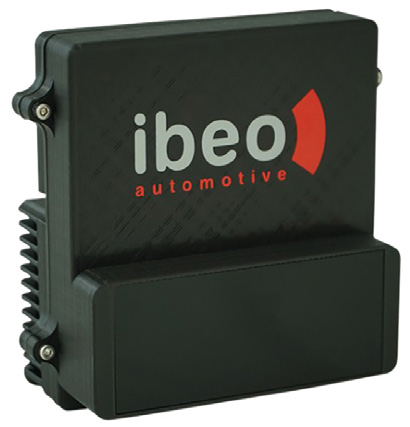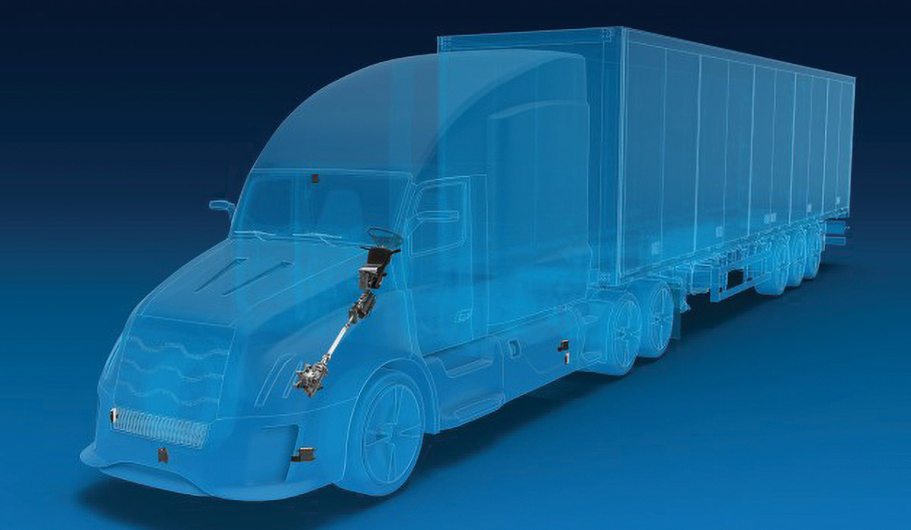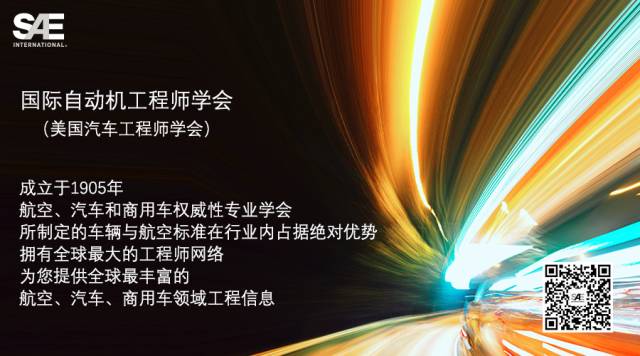专访:ZF ADAS 与自动驾驶负责人 Dan Williams, ZF下一代传感器,推动商用车辆 ADAS 与自动驾驶技术发展
发布时间:2020-06-01 作者:Ryan Gehm
采埃孚(ZF)公司 ADAS 与自动驾驶负责人 Dan Williams 表示,如今,采埃孚正在与众多合作伙伴合作,共同为乘用车和卡车市场提供摄像头、雷达以及其他相关先进组件,而卡车应用非常适合采用更复杂的新一代驾驶员辅助系统。“受到缩短车辆维修时间、降低车辆燃料成本并提高车辆安全性等激励因素的驱动,商用车辆更愿意采用 ADAS 和自动驾驶技术。” Williams 表示,“此外,行业法规可能也将强制要求我们的客户采用某些(ADAS 和自动驾驶)解决方案。”
William 指出,采埃孚公司正在同时研发具有“革命性”的高度自动驾驶系统和更加复杂的“新一代”驾驶员辅助系统,并说明公司的 OnTraX 车道保持辅助系统现已登陆某个大型原始汽车厂商客户的产品,将于 2020 年与大家见面。近日,William 在美国亚特兰大商用车展会(NACV)上接受了 SAE《卡车与非公路车辆研发》杂志的采访。此外,他还计划参加 1 月 22 日至 24 日 SAE 在华盛顿特区举行的 SAE 政府/行业会议中的商用车安全技术讨论环节。
DW: 乘用车行业很有潜力,拥有庞大的规模和充裕的研发资金,这些都是自动驾驶系统研发的绝对必要条件。但乘用车领域也有自己的局限,这些车辆的工作环境通常更加多样,甚至在很多情况下非常复杂,因此会给自动驾驶系统的应用带来挑战。相比之下,非公路车辆的情况则截然相反,这些“大家伙”的工作环境相对单一、稳定,典型的例子包括自动采矿卡车和服务于偏远地区的其他机械设备。不过,非公路车辆的问题在于“量”特别小,而且需要针对工作站点进行定制,因此需要进行大量研发工作,但最后的需求量却很低。总体来看,商用汽车是最完美的自动驾驶技术应用场景,一切都恰到好处:这些车辆的使用场景相对固定、活动范围相对集中,这都有利于自动驾驶的实现。事实上,目前,大约2/3商用车辆 95%的时间均奔驰在各大高速公路上,而这种情况下驾驶员需要做的只是握好方向盘且不要超速。我不是商用车辆的自动化很简单,但难度确实远低于乘用车的自动驾驶研发,因为乘用车可能经常需要面对一些奇怪的城市交通场景。
DW: 我们将在 2020 年推出下一代传感器,以辅助日益复杂的 ADAS 功能。具体来说,我们会推出监测距离更长、视野更广、分辨率更高的摄像头和雷达传感器。这些性能提升将有助于车辆更好地完成更多任务,其中关键的几点包括更好地监测周边行人及其他静止或半静止的目标。除此之外,我们正在与英伟达(NVIDIA)和 Ibeo 公司合作开发一些组件,推动先进技术和自动化水平的提升。2019 年 5 月,采埃孚宣布与ams 和 Ibeo Automotive Systems 合作开发固态激光雷达传感器技术。
DW: 与目前的 24GHz 传感器相比,下一代雷达的工作频率高达 77GHz,这可以更好地监测低速移动或类似静态的物体,因为事实上,之前相关传感器在这方面的表现不佳并不是因为目标材质柔软或移动缓慢造成的。新的摄像头采用了一种双模模式:车辆高速行驶时,摄像头和雷达的视野范围更窄、更远;低速行驶时,范围更宽,但距离肯定也更近,这就是一种取舍。不过,当车辆速度更低的时候,你也不那么关注远处的视野。因此,我们将在下一代传感器产品中增加一款短距离雷达,主要可以安装在车辆两侧,监测周围环境中的自行车和行人,并配合前向传感器为车辆提供真正的360 度完整视野。
SAE: 这些下一代传感器将帮助贵司在自动驾驶领域中获得些优势?
DW: 这些传感器的确是革命性的。我认为,到 2020 年,我们会在SAE L2 级自动驾驶市场中占据非常有利的位置,这是我们眼中“真正的甜蜜点”。我们认为,这种情况会持续一段时间。驾驶员可能在一段时间内还离不开这些车辆,而且我们采用一些技术来持续提高这些车辆的生产力和安全性,那么将在未来很长一段时间保持稳定地位。
DW: 这个问题很难回答。无论您在硅谷听到了什么,我的回答都比他们超前一步。(笑)我们还需要完成很多工作才能在亚利桑那、新墨西哥和德克萨斯州实现自动驾驶,还要完成更多工作才能把这项技术应用至气候更具挑战的北方各州。但一切都会成真的,这毫无疑问,只是时间问题。
DW: 很多车辆仅采用了 ASIL 认证传感器,而这会不可避免地带来冗余的需求。您可以找一堆具有较低 ASIL 汽车安全完整性等级的传感器,把它们堆在一起勉强达到实现关键安全功能的最低标准,但这会增加成本,而且一点也不优雅。真正可以满足功能安全要求的传感器基本上就是激光雷达,而 2 年过去了,激光雷达还是 5 年前的老样子,这也是业内经常开玩笑讲的。为了实现四级自动驾驶,我们的传感技术必须取得突破性进展,达到高度可靠的水平。
SAE: 动力总成在 ADAS 和自动驾驶系统中发挥什么作用?
DW: 动力总成将在迈向自动驾驶的过程中越来越多地集成到更复杂的 ADAS 功能之中。最直观的一个例子就是“列队行驶”。每个人都知道缩短车队中的车辆间距可以节省更多燃油,但这毫无疑问需要更加严格的动力总成控制。每辆车都需要了解队列级别等信息,并将这些数据输入至动力总成中。事实上,这种重载车辆的半坡停车和半坡启动很难实现平稳,会给动力总成控制提出了挑战。在这种情况下,要求车队中的“大家伙”们缩短车辆间距肯定会需要更强有力的控制。
SAE: 采埃孚在“摄像头上取代卡车后视镜”的趋势中发展如何?
DW: 我们肯定会这样做。我们正在与相关法规事务方面的乘用车人员合作。我们认为,用后视摄像头替换后视镜对于行业来说是迈出了重要一步。根据法规,目前在欧洲推行的难度会更低一些。我们在欧洲有个“列队行驶”演示项目已经将后视镜替换为摄像头了。我们将所谓的“机翼”从车辆的驾驶室顶部引出,并在该位置安装了车队的 V2V 车对车通信装置以及后视摄像头。很显然,由于监管环境不同,我们暂时还不能在美国完成同样的设计。
Together with its many partners, ZF supplies camera and radar technology and advanced components for both the passenger car and truck markets, the latter being especially suited for the move to more complex driver-assistance systems, according to Dan Williams, director of ADAS & Autonomy. “The business case in commercial vehicle for reduction in driver hours of service, fuel cost reduction and safety have strong economic incentives to adopt ADAS/automated driving technology,” he said. “Additionally, the regulations placed on the industry will require our customers to utilize certain solutions.”
ZF is working on both highly automated “revolutionary” systems and on “evolutionary” driver-assistance systems that are increasingly complex, he noted, citing the supplier’s OnTraX lane keep assist that will launch in 2020 with its first major OEM customer. Williams spoke with SAE’s Truck & Off-Highway Engineering the recent NACV Show in Atlanta. He’s scheduled to participate in a Commercial Vehicle Safety technical session at the SAE Government/ Industry Meeting, January 22-24, in Washington, DC.
SAE: Which industry will lead with the integration of automation systems?
DW: One very reasonable prospect might be passenger car, which has a lot of scale and a lot of money to invest in R&D that’s definitely required for these very expensive systems to develop. But passenger car has their own problems—they’ve got very diverse and sometimes very complicated duty cycles, or we’d say operational design domains…The opposite extreme is off-highway, like with automated mining trucks and other [machines] in remote areas. All of these off-highway examples are very low volume, very particular to a given site—they require a lot of engineering without much volume. We would say that commercial vehicles are kind of the Goldilocks scenario for automation, where things are just right. There’s more concentrated commercial-vehicle activity in fewer specific use cases that are more simply automated. Two-thirds of our vehicles spend more than 95% of their time going straight down the highway at the speed limit, maintaining the lane. I don’t want to undersell that—that’s still a very difficult thing to automate, but it’s far easier to automate than some of the very strange urban-environment scenarios that passenger cars can get themselves into.
SAE: What can we expect from ZF in the next year or two?
DW: In 2020, we’ll be launching our next generation of sensors that will support increasingly complex ADAS functions. By that I mean these new camera and radar sensors will have a longer range, they’ll have a wider field of view, and they’ll have higher resolution. All these things taken together will allow them to do any number of things, probably most significantly is to allow us to do a better job of detecting pedestrians and other stationary and semi-stationary objects. Apart from that we’re working with NVIDIA and Ibeo on components that power even higher levels of technology and full automation.[In May 2019, ZF announced a partnership with ams and Ibeo Automotive Systems to develop solid-state lidar sensor technology.]
SAE: Can you elaborate on these next-gen sensors?
DW: The next-generation radar is going to be operated at a higher frequency, at 77 GHz [vs. the current 24-GHz sensor], and that will do a better job of detecting slow-moving, sort of stationary objects—it’s not really the ‘soft tissue’ as much as the ‘slow moving’ that causes problems. And the camera, it has kind of a dual mode of operation, where it’s got a narrower field of view that extends longer for on-highway operation at high speed, and then the camera and the radar have a wider field of view that they can go into at slower speeds. The trade-off is shorter range, but at slower speeds you really don’t care. And then a new sensor we’ll be adding in this next generation is a short-range radar that can be placed on the side of the vehicle to detect bicyclists and pedestrians. That in concert with these forward-looking sensors gives us a more complete view not only in front of the vehicle but all the way around the side.
SAE: Where do these next-gen sensors position you on the SAE levels of automation?
DW: They’re evolutionary, really. I think we’re going to be very well positioned in 2020 for the L2 market, and we see that as a real sweet spot; we think that’s going to be around for a while. Drivers are going to be driving these vehicles for some time, and if we can use some of this technology to improve their productivity, to increase the safety, that’s going to have value for quite a while.
ZF’s OnTrax assist offers further capabilities with the addition of short-range radar, including lane change and city drive assist.
SAE: What’s the timeline for Level 4 autonomy?
DW: That’s a tough question. Anything that I’d say would be further out than what you hear from Silicon Valley.[Laughter] There’s a lot of work to get this going in Arizona, New Mexico, Texas, and there’s going to be even more to get it beyond that into more challenging duty cycles, in snowstorms and rough weather up north. But it’ll happen, there’s no doubt it’s going to happen. It’s just a matter of when.
SAE: What are the challenges to get to L4?
DW: A lot of it is just having the ASIL-qualified sensors, and that brings in redundancy.You can pile a bunch of sensors together that have a lower ASIL [Automotive Safety Integrity Level] to get to what you need for safety-critical functions. But that adds expense and that’s not really an elegant solution. The sensors that really satisfy the functional safety requirements, basically it’s lidar, and the old joke is, it’s two years out and it’s been that way for the last five. There needs to be some breakthroughs in highly reliable sensing technology to be able to do that.
SAE: What’s the role of powertrain in ADAS and autonomy?
DW: Powertrain will be increasingly integrated into more complex ADAS functions on the way to autonomy. An easy thing to describe is platooning. Everybody suspects that as we shorten the following distances with platooning we can increase the fuel savings. When you shorten the following distances, you need to more tightly control the powertrain. You need knowledge of grade information and stuff like that and feed that into the powertrain. It’s a fairly difficult problem to be able to smoothly start and stop these heavily loaded vehicles on a grade, that challenges powertrain control—to have them in an automated way to back up and very gently kiss the loading dock. That requires a lot of control.
SAE: What’s ZF’s position on cameras replacing exterior mirrors on trucks?
DW: We’d like to do it, for sure. We are working with our passenger car people that are involved in the regulatory affairs with this action. We think it’d be a good step for the industry to be able to replace the mirrors with rearward-looking cameras. It’s maybe a little bit easier to do in Europe right now based on the regulation. We’ve got a demo going on with a platooning project over there that actually does exactly this. We’ve got what we call ‘wings’ that come out of the vehicle at the top of the cab, and that’s where we put the V2V [vehicle-to-vehicle] communication between the platooning vehicles and we’ve also got rearward-looking cameras in there. It’s obviously something where we’ve got to see regulatory change over here before that can happen.
Author: Ryan Gehm
SAE Autonomous Vehicle Engineering
 采埃孚ADAS 和自动驾驶负责人Dan Williams
采埃孚ADAS 和自动驾驶负责人Dan Williams 采埃孚正在与 Ibeo 和 ams 合作开发几款固态激光雷达传感器,可以提供车辆周围的完整 3D 图像,并精确感知复杂的交通状况。
采埃孚正在与 Ibeo 和 ams 合作开发几款固态激光雷达传感器,可以提供车辆周围的完整 3D 图像,并精确感知复杂的交通状况。 采埃孚的OnTrax 辅助系统采用了更先进的短程雷达,因此具备了更多高级功能,包括车辆变道和城市驾驶辅助等。
采埃孚的OnTrax 辅助系统采用了更先进的短程雷达,因此具备了更多高级功能,包括车辆变道和城市驾驶辅助等。
